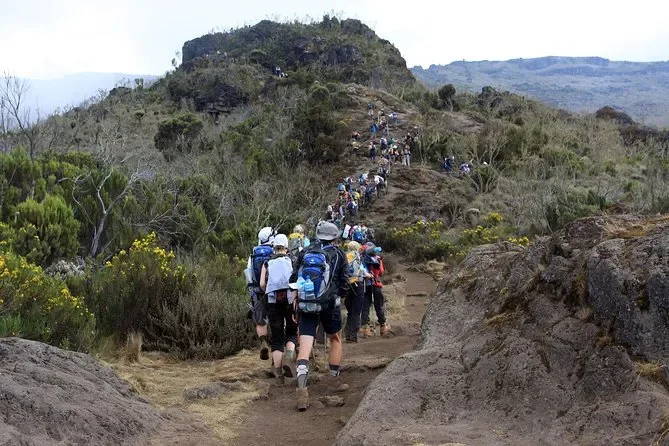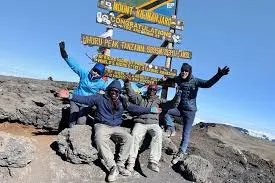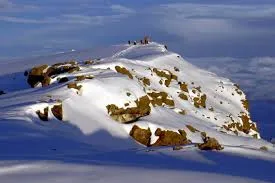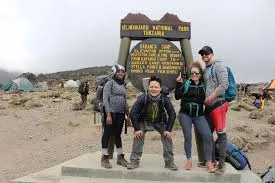How Many Days to Climb Kilimanjaro: Complete Itinerary
Climbing Mount Kilimanjaro, Africa’s highest peak at 5,895m (19,341ft), requires careful planning. The number of days needed depends on the route, with options ranging from 5 to 9 days. Capable Africa Tours offers expertly crafted itineraries to maximize summit success (up to 98% on longer routes) while ensuring safety and enjoyment. This guide details each route’s duration, daily itineraries, success rates, and tips for choosing the best path for your Kilimanjaro adventure.
Plan Your Kilimanjaro Trek Now
How Many Days Does It Take to Climb Kilimanjaro?
Climbing Kilimanjaro typically takes 5–9 days, depending on the route chosen. Shorter routes (5–6 days) like Marangu are faster but have lower summit success rates (65–80%) due to rapid ascents. Longer routes (7–9 days) like Lemosho or Northern Circuit offer better acclimatization, increasing success rates to 90–98%. Capable Africa Tours tailors each itinerary to balance safety, scenery, and summit goals. Below is a detailed breakdown of popular routes, their durations, and what to expect.
Kilimanjaro Route Durations and Success Rates
| Route | Days | Distance (km) | Success Rate | Difficulty | Accommodation |
|---|---|---|---|---|---|
| Marangu | 5–6 | 64–72 | 65–80% | Moderate | Huts |
| Machame | 6–7 | 62 | 85–90% | Challenging | Tents |
| Lemosho | 7–8 | 70 | 90–95% | Challenging | Tents |
| Rongai | 6–7 | 73 | 80–85% | Moderate | Tents |
| Northern Circuit | 8–9 | 98 | 95–98% | Moderate | Tents |
| Umbwe | 6–7 | 53 | 70–80% | Very Challenging | Tents |
Why Choose Your Kilimanjaro Route Wisely?
Selecting the right route impacts your summit success, safety, and enjoyment. Longer routes like Lemosho and Northern Circuit allow better acclimatization, reducing altitude sickness risks (affecting 50% of climbers above 4,000m). Shorter routes like Marangu are budget-friendly but riskier due to rapid ascents. Capable Africa Tours helps you choose based on fitness, experience, and preferences, ensuring a memorable climb.
Key Factors to Consider
- Acclimatization: Longer routes (7–9 days) reduce altitude sickness by 20–30% compared to 5-day routes.
- Scenery: Lemosho and Machame offer diverse landscapes, from rainforests to glaciers.
- Difficulty: Routes like Umbwe are steep and suited for experienced hikers.
- Budget: Shorter routes are cheaper but compromise success rates.
- Accommodation: Marangu offers huts; others use tents for a rugged experience.
Visualize Your Kilimanjaro Climb
Join Capable Africa Tours for an unforgettable Kilimanjaro adventure. Watch this map to explore the routes and plan your trek.
Tips for a Successful Kilimanjaro Climb
A successful Kilimanjaro climb requires preparation, the right mindset, and smart packing. Training in advance, pacing yourself, and staying hydrated are key to handling the altitude and challenging terrain. Choosing the right gear and working with an experienced trekking company can greatly improve your chances of reaching the summit safely. Here’s a list of practical tips to help you prepare for a 6–9 day Kilimanjaro trek with Capable Africa Tours.
- Choose a Longer Route: Opt for 7–9 days to improve acclimatization and boost success by up to 30%.
- Train in Advance: Prepare with 3–6 months of cardio, hiking, and strength training (e.g., 5–10km hikes with elevation).
- Pack Smart: Use a 30–40L daypack and rent heavy gear like sleeping bags from Capable Africa Tours.
- Hydrate Well: Drink 3–4L of water daily to combat altitude effects.
- Listen to Guides: Follow your guide’s pace (“pole pole” or slowly) to conserve energy.
- Monitor Health: Report symptoms of altitude sickness immediately for timely intervention.
Ready to Climb Mount Kilimanjaro?
Embark on an epic adventure with Capable Africa Tours. Our expert guides, tailored itineraries, and 98% summit success rate on longer routes ensure a safe and unforgettable climb to Uhuru Peak.
- 98% summit success rate on Lemosho and Northern Circuit
- Experienced, certified guides with local expertise
- Eco-friendly treks supporting local communities
- Comprehensive gear rentals and all-inclusive packages
- Flexible itineraries for all fitness levels
Limited spots for Kilimanjaro treks — book now to secure your climb!
Plan Your Trek Now


